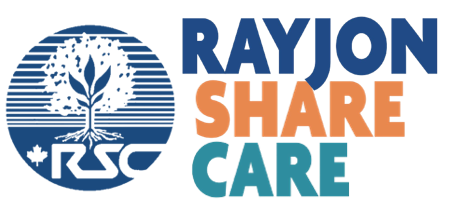Part 1 – Haiti
While we have countless inspiring stories of resilience from our partner communities in Haiti, the growing uncertainty around funding adds a bittersweet layer to these narratives. The recent cuts to U.S. foreign aid are already causing some serious challenges, and we expect things to get tougher in the coming months. While our partners in Haiti don’t rely directly on American funding, many of the local organizations they work with do. Unfortunately, many NGOs have been forced to pull back or stop their programs altogether, making the ongoing insecurity and instability even worse.
It’s still unclear what US foreign funding will look like after the 90-day freeze, but organizations are preparing for the possibility of a much longer suspension of aid. The damage done to critical systems is already being felt, and it will take a lot of time to rebuild.
The U.S. government is Haiti’s main source of humanitarian aid, and even after the current pause in funding, it’s expected that 83% of USAID funding will remain cut. While we don’t yet know exactly which programs will be affected, one thing is clear: the impacts will be severe.
For years, U.S. foreign aid has supported essential health programs, nutrition services, and community clinics. Now, many clinics have been forced to close, feeding programs have been halted, and critical water and sanitation initiatives are being scaled back.
The lack of access to food is already leading to more malnourished children, vulnerable adults and the elderly, with serious consequences for health and well-being.
The clean water shortage isn’t just a problem for today—it’s a long-term crisis. Without access to clean water and sanitation, there will certainly be an increase in infectious diseases that are debilitating or even deadly.
The cuts in healthcare have immediate consequences, but the lack of access to preventative medicine will have lasting effects. Without vaccines, preventable diseases will spread. The absence of contraception (which previously was almost completely provided through US funding) means more unplanned pregnancies, a higher risk of HIV transmission, and the spread of other severe, health-impacting STIs. The ripple effects of this will be felt for years to come.
This situation is already dire, but in a country still deeply mired in crisis, displacement is making everything worse. As of mid-January, the IOM reported over 1 million internally displaced people in Haiti—people who are refugees in their own country. And this number is likely much higher, as thousands are being displaced every week from the most dangerous “Redzones.” These families are fleeing to other areas with little more than the clothes on their backs, arriving in communities that are already struggling to provide food, shelter, clothing, and other essentials.
One community providing safety for many of these displaced people is Cap Haïtien. Our partner, CNewC, a critical resource for malnourished children and their families, is seeing a significant increase in the number of people in great need. They include both local Cap Haïtien residents and those seeking refuge from other parts of the country.
Add to that the Haitian immigrants being deported from the United States… we are deeply concerned about the revocation of Temporary Protected Status (TPS) to half a million or more Haitians living in the United States and the impact it will have on people who are forced to return to a country that is not in a position to receive them. Many will inevitably end up in already overburdened communities, like Cap Haitien, where resources have been stretched to their breaking point.
Cap Haitian and the Rayjon supported centre ( C-New-C ) are where even more support is needed, not less.
With the end of most U.S. federal foreign aid, vital programs that were running in Cap Haïtien to provide healthcare and nutrition have now suddenly been pulled. Cornerstone organizations like Partners in Health, are no longer able to offer the support they once did. Other key organizations, like Konbit Sante, which operates Justinian Hospital, whose doctors collaborate with CNewC on the nutrition program, are barely holding on. This leaves displaced people across the country without access to the basic services they desperately need to survive.
Although the situation is bleak, and we must raise awareness about the severe and lasting impacts these decisions will have on Haiti’s communities, we want to be clear:
This is a call for solidarity. It’s a renewed plea to stand shoulder to shoulder with our partner communities.
Haiti is not without hope.
At Rayjon, we remain committed to strengthening our partner communities as they navigate this storm. While a small organization like ours cannot replace the vast resources once provided by U.S. foreign aid, we are determined to work with communities to create stable, sustainable change. This change may be slow, but it generates lasting, empowering benefits.
A perfect example of this slow, steady change is the Women’s Federation of Saint-Marc (FEFEH). Through initiatives like the breadfruit and grain mill, they’ve created a stable income source, which in turn allows FEFEH to reinvest in other programs, such as microloans for local businesses. They are even working towards providing medical care to those far from hospitals. It’s through ideas like these—driven by community empowerment and supported by resources wherever we can find them—that resilience truly shines.
Women’s Federation of Saint-Marc dancing together in solidarity and celebration during International Women’s Day 2025.
More resources to stay up to date:
To stay up to date on news we recommend following Haitian Times.
A recent podcast discusses potential paths forward for development in Haiti, offering some insight into what the future could look like: Haiti: Better Without Aid?

